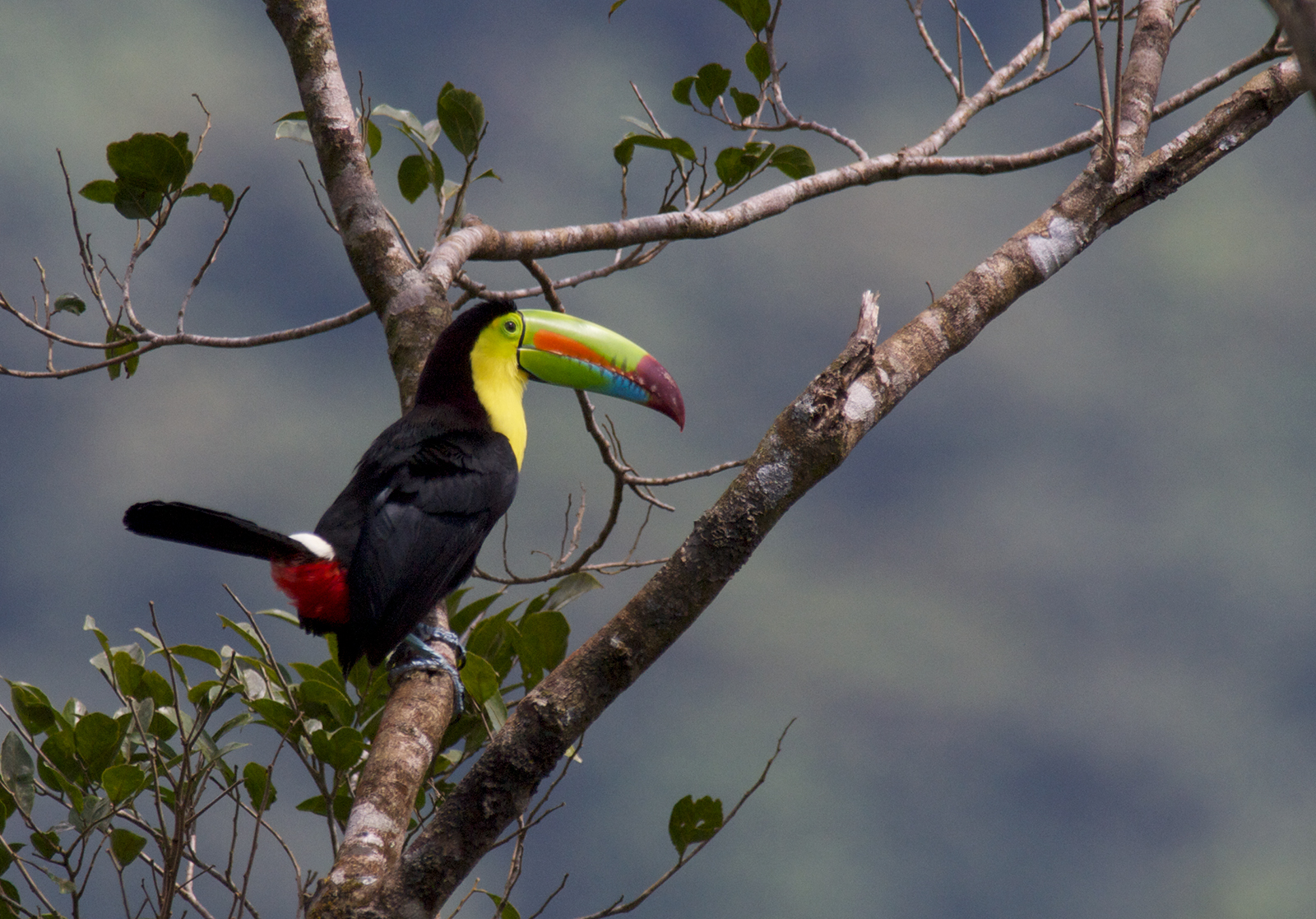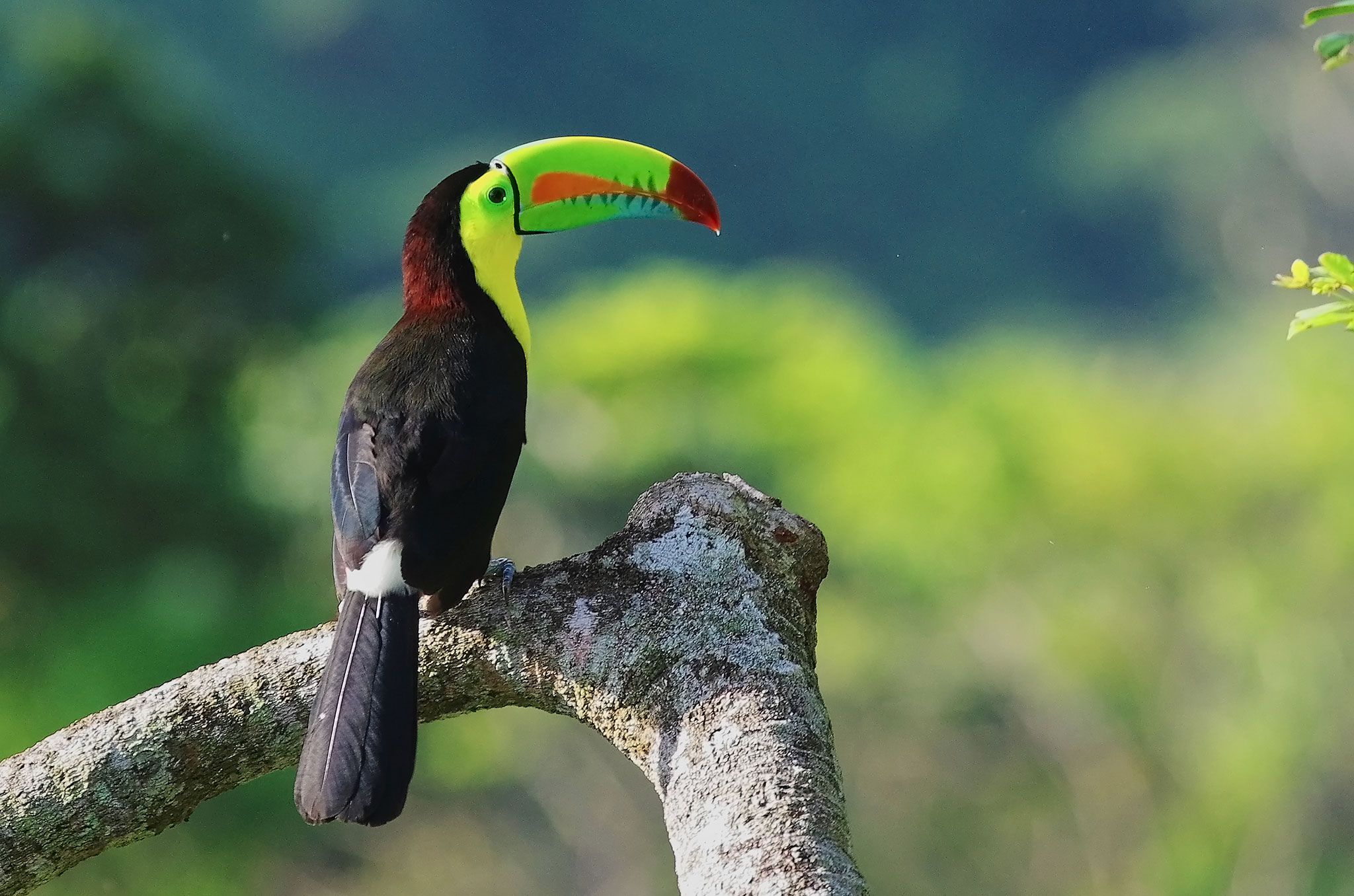
The chicks will fledge the nest at 8 or 9 weeks old, having fully feathered and grown larger beaks. The young are completely dependent on the care of their parents, and the parents take turns feeding fruits to the chicks both will keep the nest clean by removing fecal matter from the nest, and guard and protect the young. The chicks have heel pads that protect their feet and keep them elevated from the damp floor until they fledge. Once hatched the little pink, featherless chicks wont open their eyes for 3 weeks. Both parents will then take turns to incubate the eggs with their body heat for 15 to 20 days. Females lay a clutch size of 2 to 5 round, white, glossy eggs. They will start nesting up to six weeks before eggs are produced, beginning by clearing out their nest cavity until it is bare. They can be quite fussy and favour cavities about 20 feet off of the ground with only a small entrance hole. These Toucans prefer to nest inside tree cavities in holes already excavated by woodpeckers. Keel-billed Toucans are monogamous, they form male-female pairs, make a nest and raise their young together. These birds are omnivores they feed primarily on fruit, such as papaya, mango and banana, but will occasionally eat insects, reptiles, birds, and eggs. They are arboreal, which means they live in the trees. The Keel-billed Toucan is found in tropical lowland evergreen and secondary forests. It is the subspecies Ramphastos sulfuratus brevicarinatus that calls Costa Rica its home.

There are 2 recognised subspecies of Keel-billed Toucan: the larger Ramphastos sulfuratus sulfuratus, found in southern Mexico, Guatemala and Honduras, and the smaller Ramphastos sulfuratus brevicarinatus found ranging more widely from Mexico to Colombia. The Killed-billed Toucan produces a loud frog-like call that can be heard up to a half mile away. When toucans sleep, they turn their head so that their long bill rests on their back and their tail is folded over their head. Interestingly Keel-billed Toucans are not very good at flying, instead they can often be seen moving from tree to tree mostly by hopping. Toucans use their bills during courtship – they playfully duel and throw fruit to each other – and as a defensive weapon.


The toucan’s beak is made of the protein keratin (the same that makes our hair and nails) with thin rods of bone for support. With such a large beak you would assume it is heavy, but it is actually hollow and so quite light. Both sexes are similar in colour, but the males are larger. Your eye however is drawn to the large brightly coloured bill, a rainbow of colours: yellow, green, orange and blue with a red tip. Adults are mostly black with a vibrant yellow-feather bib covering their throat and chest and a green ring around their eyes. The Killed-billed Toucan is one of the most iconic species of Costa Rica, its bright coloured beak has become synonymous with visions of trekking in the rainforest.


 0 kommentar(er)
0 kommentar(er)
